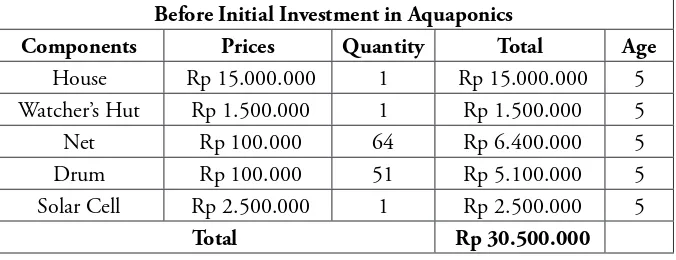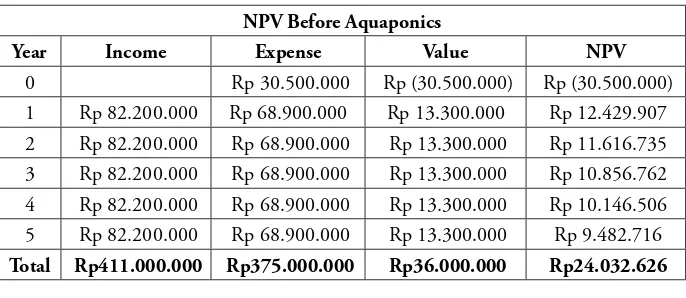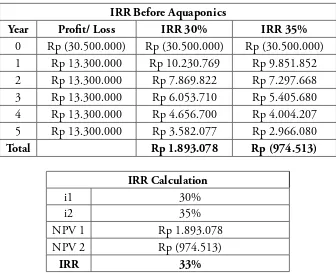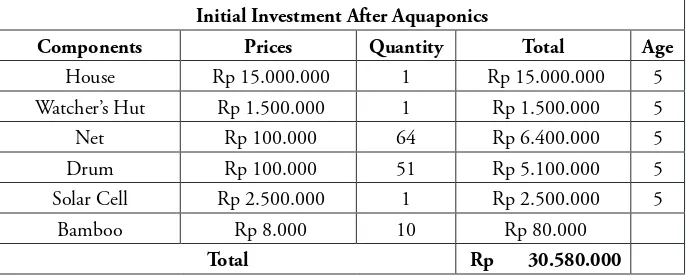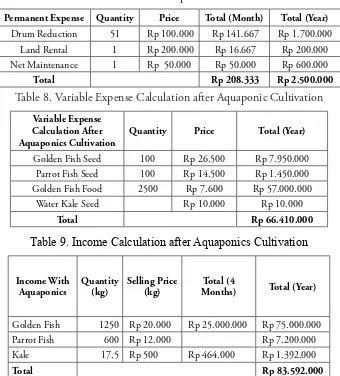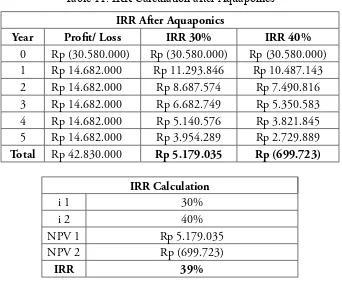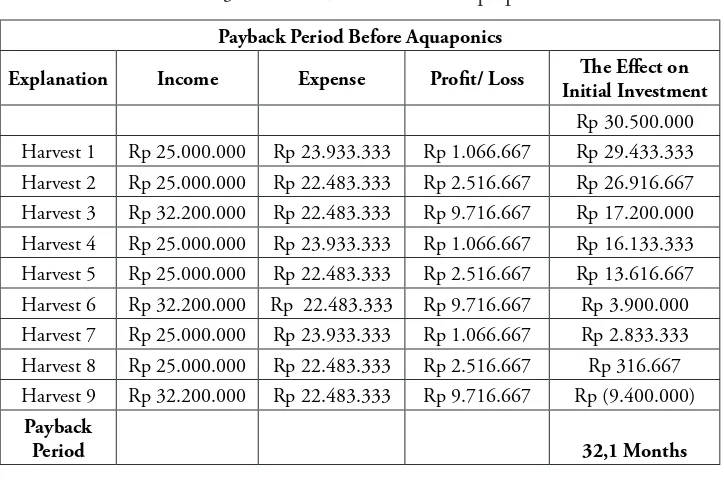Shirkah
Journal of Economics and Business
Shirkah
Journal of Economics and Business
Vol. 1, No. 2, May-August 2016 ISSN: 2503-4235 (p); 2503-4243 (e)
Editor in Chief
Sri Walyoto
Editorial Boards
Abu Umar Faruq Ahmad, UBD School of Business and Economics, Brunei Darussalam
Amelia Fauzia, Asia Research Institute, National University of Singapore, Singapore
Cedomir Nestorovic, ESSEC Business School Asia Pacific, Singapore
Dwi Condro Triono, Faculty of Islamic Economics and Business, IAIN Surakarta, Indonesia
Fahmy Radhi, Faculty of Economics and Business Universitas Gadjah Mada, Yogyakarta, Indonesia
Hasan Basri, Syiah Kuala University, Aceh, Indonesia
Jaka Sriyana, Faculty of Economics, Universitas Islam Indonesia, Yogyakarta, Indonesia
Johan Fischer, Department of Social Sciences and Business Roskilde University, Denmark
Masudul Alam Choudhury, Postgraduate Program in Islamic Economics and Finance, Trisakti University, Jakarta, Indonesia and the College of Economics and Political Science (CEPS) in Sultan Qaboos University (SQU), Oman
M. Falik Isbah, School of Humanities and Social Science, University of New South Wales, Australia
M. Ishaq Bhatti, La Trobe Business School Department of Economics and Finance La Trobe University, Australia
Nunung Nurul Hidayah, Aston Business School, Aston University, Birmingham, United Kingdom
Najib Kailani, Pascasarjana, Universitas Islam Negeri (UIN) Sunan Kalijaga, Yogyakarta, Indonesia
iii
Managing Editors
M. Endy Saputro M. Zainal Anwar
Assistant to Editor
Supriyanto
Shirkah Journal of Economics and Business is a peer-reviewed journal published three times a year (January-April, May-August and September-December) by Faculty of Islamic Economics and Business, Institut Agama Islam Negeri (IAIN/ State Institute for Islamic Studies) Surakarta Central Java, Indonesia. The main objective of Shirkah is to offer an academic space of exchange ideas and initiate the increase number of qualified article produced by postgraduate students, practitioners and academicians.
Editorial Office Ruang Jurnal Shirkah
Lantai Dasar, Sayap Barat, Fakultas Ekonomi dan Bisnis Islam, IAIN Surakarta
Jln. Pandawa No. 1, Kartasura, Sukoharjo, Jawa Tengah Kode Pos. 57168 Phone (+62271) 781516 Fax: (+62271)782336
v
Shirkah
Journal of Economics and Business
Vol. 1, No. 2, May-August 2016 ISSN: 2503-4235 (p); 2503-4243 (e)
Table of Contents
Articles
Tajus Subqi 133
The Jakarta Islamic Index-LQ 45: Rate Financial Performance, Beta Stocks and Stock Price on the Indonesian Stock Exchange
Reskino 161
Zakat and Islamic Corporate Social Responsibility: Do These Effect the Performance of Sharia Banks?
Hafiez Sofyani 185
Mahartika Retno Febri Anggraini Sabrina Ayunani
Islamic Education Mentoring Program and the Religiosity of Prospective Accountants
Ika Dewi Hartutik 207
Kartika Hendra Endang Masitoh
How does Student Interest Effect Participation in Pursuing Education for the Accounting Profession (PPAk)?
Roikhan MA 223
BAZIS Scholarship Funds and Student Achievement
Abel Gandhy 241
Aquaponics Cultivation of
Ipome Aquatica
and the Peasant
Financial Income of Cirata Cistern
Abel Gandhy
Faculty of Economics and Management, Surya University
Abstract
The research paper analyzes the financial income of a poor community living around the Cirata cistern, in West Java, Indonesia, before and after the community employed the aquaponics strategy of planting ipomoea aquatica. Data are gathered from observation, interviews and statistical analysis of the incomes of community members. In addition, analysis of the data applies Net Present Value (NPV), Internal Rate of Return (IRR), and
Payback Period (PP). The findings clearly demonstrate an increased annual income of more than 1.117.296 rupiah among those community members using the aquaponics strategy. Once the community has adjusted to professionally implementing this aquaponics strategy, it would be practically useful to invite investors to invest their capital to develop this area.
Keywords :aquaponics, financial income, West Java, internal rate of return, payback period
Fruit and vegetable consumption in Indonesia is only 40 kg/ year per capita. This is far below the standard of the Food and Agricultural Organization (FAO), which recommends consumption of a minimum of 73 kg/ year of vegetables and 65 kg/ year of fruit per capita (Fahrurrozi, 2013). Horticulture offers the possibility of overcoming these shortfalls. Horticulture is the art and practice of garden cultivation and management. It is used to solve problems and develop technologies to grow crops of fruit, vegetables, flowers, decorative plants, and bio-farm plants to be used
Shirkah
Journal of Economics and Business
ISSN: 2503-4235 (p); 2503-4243 (e)
242 Abel Gandhy
Vol. 1 No. 2, May - August 2016 as sources of food, fibre, nutrition, decoration, and luxury and also to enrich culture (Poerwanto and Susila, 2014).
Table 1. Initial Investment Expense Calculation before Aquaponic Cultivation
Before Initial Investment in Aquaponics
Components Prices Quantity Total Age
House Rp 15.000.000 1 Rp 15.000.000 5
There are several techniques in horticultural cultivation, one of which is the aquaponics system of cultivation. Aquaponics is a combination of fish cultivation (aqua-culture) and vegetable cultivation (hydroponics) (Rakocy, 2006; Suhl, J.ab, Dannehl, D.b, Kloas, W.cd (et.al), 2016), which combines fishery and vegetable cultivation with soil. The vegetables grown do not require fertilizer and gain nutrition from fish stools. In this case, the vegetable, water kale, is grown using aquaponics as it is easy to cultivate.
Table 2. Variable Expense Calculation before Aquaponic Cultivation
Variable Expense
Golden Fish Seed 100 Rp 26.500 Rp 2.650.000 Rp 7.950.000 Parrot Fish Seed 100 Rp 14.500 Rp 1.450.000 Golden Fish Food 2500 Rp 7.600 Rp 19.000.000 Rp 57.000.000
Aquaponics Cultivation of Ipome Aquatica 243
Vol. 1 No. 2, May - August 2016
One potential place to cultivate aquaponics is Cirata reservoir, in Cianjur, West Java. The reservoir consists of 66 of water from the Citarum river dam and spans the three regencies of Cianjur, Purwakarta and Bandung. The largest area, of 29,603,299, is in Cianjur regency (Aksomo, 2007). This reservoir is used by the surrounding people to cultivate fish using keramba jaring apung/floating nets (KJA). The cultivation in Cirata reservoir covers more than 51,418 terraces.
Table 3. Income Calculation before Aquaponic Cultivation
Income
Golden Fish 1250 Rp 20.000 Rp 25.000.000 Rp 75.000.000 Parrot Fish 600 Rp 12.000 Rp 7.200.000
Total Rp 82.200.000
244 Abel Gandhy
Vol. 1 No. 2, May - August 2016 Measuring NPV and IRC
This research had been carried out in February 2015 at Cirata Reservoir, Mande Village, Cianjur, West Java, Indonesia. Both primary and secondary data were used. The primary data were gained from interviews with aquaponics farmers and fish farmers. The secondary data were obtained through literature review. The qualitative research was used to see how far aquaponics is able to reduce pollution and a quantitative approach was employed to analyze farmer income before and after implementation of the aquaponics system.
The data collection methods include observation with visitation to the Cirata Reservoir, an interview with the Head of Cirata UPDT (Reservoir Fishery Cultivation Development Office) and a review of past literature on the subject. The data analysis used includes Net Present Value (NPV), Internal Rate of Return (IRR), and Payback Period (PP).
Table 4. NPV Calculation before Aquaponics
NPV Before Aquaponics
Year Income Expense Value NPV
0 Rp 30.500.000 Rp (30.500.000) Rp (30.500.000)
1 Rp 82.200.000 Rp 68.900.000 Rp 13.300.000 Rp 12.429.907 2 Rp 82.200.000 Rp 68.900.000 Rp 13.300.000 Rp 11.616.735 3 Rp 82.200.000 Rp 68.900.000 Rp 13.300.000 Rp 10.856.762 4 Rp 82.200.000 Rp 68.900.000 Rp 13.300.000 Rp 10.146.506 5 Rp 82.200.000 Rp 68.900.000 Rp 13.300.000 Rp 9.482.716
Total Rp411.000.000 Rp375.000.000 Rp36.000.000 Rp24.032.626
Aquaponics Cultivation of Ipome Aquatica 245
Vol. 1 No. 2, May - August 2016 Explanation:
Bt = Acceptation in year t Ct = Expense in year t
T = Business Activity Year (t = 0,1,2,...n) i = DiscountRate level (%)
NPV Indicators:
If NPV > 0, the business is eligible to operate If NPV < 0, the business is not eligible to operate
Table 5. IRR Calculation before Aquaponics
IRR Before Aquaponics
Year Profit/ Loss IRR 30% IRR 35%
0 Rp (30.500.000) Rp (30.500.000) Rp (30.500.000)
1 Rp 13.300.000 Rp 10.230.769 Rp 9.851.852
2 Rp 13.300.000 Rp 7.869.822 Rp 7.297.668
3 Rp 13.300.000 Rp 6.053.710 Rp 5.405.680
4 Rp 13.300.000 Rp 4.656.700 Rp 4.004.207
5 Rp 13.300.000 Rp 3.582.077 Rp 2.966.080
Total Rp 1.893.078 Rp (974.513)
IRR Calculation
i1 30%
i2 35%
NPV 1 Rp 1.893.078
NPV 2 Rp (974.513)
246 Abel Gandhy
Vol. 1 No. 2, May - August 2016 IRR is a method to calculate interest level to equate present value from all input cash and output cash of an investment. The formula is:
��� � ��+�������
������������� ��)
� ��
IRR indicator:
If IRR is bigger than discount rate the business is not eligible to operate. Payback period is a method used to calculate the period needed to return the investment money from the yearly cash input (proceeds) from an investment project. The formula is:
��� � ��+�������
������������� ��)
PP = �
��
Explanation:
I : Investment
Ab : Yearly Net Income
Agricultural Policy Effects
Aquaponics Cultivation of Ipome Aquatica 247
Vol. 1 No. 2, May - August 2016
A policy recommendation is a suggestion to the authority of policy making on a policy action to solve a problem or achieve a goal (Abidin, 2006). Agricultural policy recommendation policy is created for the farmers as aquaponics cultivation operator, for agricultural extension as aquaponics cultivation trainer and for UPTDCirata Reservoir Fishery Cultivation Development Office as intermediate institution between agricultural extension and aquaponics farmer and controlling aquaponics cultivation process development by the farmers.
The aquaponic system cultivated and analyzed in this research is performed in a floating net (KJA) unit measuring 14 x 14 m. The aquaponics method is used to cultivate the water vegetable kale. Bamboo is used to support the floating kale above the water line. The kale grows outside the net with 50 cm wide from the furthest net. The kale is planted on three sides of the KJA. The remaining side is used to moor boats to the KJA. The aquaponics planning system is shown below:
Table 6. Initial Investment Expense Calculation after Aquaponic Cultivation
Initial Investment After Aquaponics
Components Prices Quantity Total Age
248 Abel Gandhy
Vol. 1 No. 2, May - August 2016 Table 7. Permanent Expense Calculation
Permanent Expense Quantity Price Total (Month) Total (Year)
Drum Reduction 51 Rp 100.000 Rp 141.667 Rp 1.700.000
Land Rental 1 Rp 200.000 Rp 16.667 Rp 200.000
Net Maintenance 1 Rp 50.000 Rp 50.000 Rp 600.000
Total Rp 208.333 Rp 2.500.000
Table 8. Variable Expense Calculation after Aquaponic Cultivation
Variable Expense Calculation After Aquaponics Cultivation
Quantity Price Total (Year)
Golden Fish Seed 100 Rp 26.500 Rp 7.950.000
Parrot Fish Seed 100 Rp 14.500 Rp 1.450.000
Golden Fish Food 2500 Rp 7.600 Rp 57.000.000
Water Kale Seed Rp 10.000 Rp 10.000
Total Rp 66.410.000
Table 9. Income Calculation after Aquaponics Cultivation
Income With
Aquaponics Cultivation of Ipome Aquatica 249
Vol. 1 No. 2, May - August 2016
water kale aquaponics
The harvested fish from the KJA farmers consists of golden fish and parrot-fish. The golden fish is harvested every four months with an average harvest of 1,250 kg. The parrot fish is harvested once a year with an average harvest of 600 kg.
Table 10. NPV Calculation after Aquaponics
NPV After Aquaponics
Year Income Expense Value NPV
0 Rp 30.580.000 Rp (30.580.000) Rp (30.580.000)
1 Rp 83.592.000 Rp 68.910.000 Rp 14.682.000 Rp 13.721.495 2 Rp 83.592.000 Rp 68.910.000 Rp 14.682.000 Rp 12.823.827 3 Rp 83.592.000 Rp 68.910.000 Rp 14.682.000 Rp 11.984.885 4 Rp 83.592.000 Rp 68.910.000 Rp 14.682.000 Rp 11.200.828 5 Rp 83.592.000 Rp 68.910.000 Rp 14.682.000 Rp 10.468.063
250 Abel Gandhy
Vol. 1 No. 2, May - August 2016
Table 11. IRR Calculation after Aquaponics
IRR After Aquaponics
Year Profit/ Loss IRR 30% IRR 40%
0 Rp (30.580.000) Rp (30.580.000) Rp (30.580.000)
1 Rp 14.682.000 Rp 11.293.846 Rp 10.487.143
2 Rp 14.682.000 Rp 8.687.574 Rp 7.490.816
3 Rp 14.682.000 Rp 6.682.749 Rp 5.350.583
4 Rp 14.682.000 Rp 5.140.576 Rp 3.821.845
5 Rp 14.682.000 Rp 3.954.289 Rp 2.729.889
Total Rp 42.830.000 Rp 5.179.035 Rp (699.723)
IRR Calculation
The calculation of the result of financial analysis before and after aquaponics was implemented is shown in the table below.
Explanation Before after
NPV Rp. 24,032,626 Rp. 29,619,099
IRR 33% 39%
PP 32,1 Months 27,4 Months
Table 12. Business Financial Analysis Before and After Aquaponics
Implementation
Aquaponics Cultivation of Ipome Aquatica 251
Vol. 1 No. 2, May - August 2016
is Rp. 24,032,626 and after is Rp. 29,619,099. This means the farmers’ profit five years before the implementation of aquaponics was Rp. 24,032,626, and after implementation is Rp. 29,619,099. The NPV with Rp. 29,619,099 for a five year project means farmers gain an additional income of Rp. 93,108. The interest level is 7% from a five year project. This means discount rate level to pay back the modal in business activity without aquaponic cultivation is 33%. The business activities after aquaponics implementation will increase the discount rate and make the business activities better than before the aquaponic cultivation.
252 Abel Gandhy
Vol. 1 No. 2, May - August 2016 Table 13. PP Calculation before Aquaponics
Payback Period Before Aquaponics
Explanation Income Expense Profit/ Loss The Effect on Initial Investment
Rp 30.500.000 Harvest 1 Rp 25.000.000 Rp 23.933.333 Rp 1.066.667 Rp 29.433.333 Harvest 2 Rp 25.000.000 Rp 22.483.333 Rp 2.516.667 Rp 26.916.667 Harvest 3 Rp 32.200.000 Rp 22.483.333 Rp 9.716.667 Rp 17.200.000 Harvest 4 Rp 25.000.000 Rp 23.933.333 Rp 1.066.667 Rp 16.133.333 Harvest 5 Rp 25.000.000 Rp 22.483.333 Rp 2.516.667 Rp 13.616.667 Harvest 6 Rp 32.200.000 Rp 22.483.333 Rp 9.716.667 Rp 3.900.000 Harvest 7 Rp 25.000.000 Rp 23.933.333 Rp 1.066.667 Rp 2.833.333 Harvest 8 Rp 25.000.000 Rp 22.483.333 Rp 2.516.667 Rp 316.667 Harvest 9 Rp 32.200.000 Rp 22.483.333 Rp 9.716.667 Rp (9.400.000)
Payback
Period 32,1 Months
Table 14. PP Calculation after Aquaponics
Payback Period After Aquaponics
Explanation Income Expense Profit/ Loss The Effect on Initial Investment
Rp 30.660.000 Harvest 1 Rp 25.464.000 Rp 22.493.333 Rp 2.970.667 Rp 27.689.333 Harvest 2 Rp 25.464.000 Rp 23.933.333 Rp 1.530.667 Rp 26.158.667 Harvest 3 Rp 32.664.000 Rp 22.483.333 Rp 10.180.667 Rp 15.978.000 Harvest 4 Rp 25.464.000 Rp 22.493.333 Rp 2.970.667 Rp 13.007.333 Harvest 5 Rp 25.464.000 Rp 23.933.333 Rp 1.530.667 Rp 11.476.667 Harvest 6 Rp 32.664.000 Rp 22.483.333 Rp 10.180.667 Rp 1.296.000 Harvest 7 Rp 25.464.000 Rp 23.943.333 Rp 1.520.667 Rp (224.667)
Payback
Aquaponics Cultivation of Ipome Aquatica 253
Vol. 1 No. 2, May - August 2016
The financial analysis calculation shows the aquaponic cultivation activity will make more profit for agricultural businesses. Aquaponics will also reduce water pollution caused by un-eaten fish food fall-out. Several policy recommendations are needed to make fish farmers in Cirata Reservoir perform the aquaponics socialization program, the aquaponic cultivation method training, and socialization for the potential investors to collect vegetables from aquaponic cultivation harvest.
Acquisition policy recommendation states that the purpose of socialization is to provide knowledge about aquaponic cultivation to farmers. The farmers should be introduced to aquaponics due to it’s categorization as new agricultural system. Most Indonesian farmers have low education levels and only know traditional agricultural systems. Therefore, the program of socialization is needed to introduce aquaponic cultivation to farmers. The related parties in the socialization program are Bapak Ade, the Head of UPTD Cirata Reservoir Fishery Cultivation Development Office as socialization provider, aquaponics cultivation extension, and farmers as aquaponic cultivation operators. Bapak Ade’s position is as the one with authority to choose potential KJA farmers as aquaponics cultivators. The chosen farmers should live close by to allow time and cost efficiency in transporting the vegetable harvest.
254 Abel Gandhy
Vol. 1 No. 2, May - August 2016 Fishery Cultivation Development Office as the intermediary between the extension, theresearcher and the farmers. UPTD will classify aquaponics cultivation based on the area to make the control easier in the aquaponics cultivation process.
One of the farmers’ problems is assurance of aquaponics harvest reception center market. Therefore, business opportunity socialization is needed for potential investors. The targeting parties are established fish food sellers around Cirata reservoir. The reception center market enable aquaponic farmers to sell vegetables easily and to ensure a market for the vegetables. The parties involved here are the UPTD Cirata Reservoir Fishery Cultivation Development Office as socializer, and the potential investors, as the targets of this policy.
Conclusion
The analysis shows the differences between financial analysis before and after aquaponics implementation. The financial analysis criteria show NPV, IRR and PP after aquaponics implementation is higher than without implementation. The NPV before aquaponics is Rp. 24,032,626 and after is Rp. 29,619,099. The IRR before aquaponics is 33 % and after is 39%. The PP before aquaponics is four years and after aquaponics is three years. It means that the aquaponic cultivation business creates more profit than traditional methods, despite the small additional cost for vegetable plantation.
Aquaponics Cultivation of Ipome Aquatica 255
Vol. 1 No. 2, May - August 2016
References
Abidin, Said Zainal. (2006). Kebijakan Publik. Jakarta: Suara Bebas. Aksomo, Rudiansyah. (2007). Nilai Ekonomi Pemanfaatan Waduk
Cirata untuk Perikanan dan Wisata Tirta di Kabupaten Cinjur, Jawa Barat. Manajemen Bisnis dan Ekonomi Perikanan-Kelautan. Fakultas Perikanan dan Kelautan. Institut Pertanian Bogor.
Auliaturridha, Winda Sari, Nina Budiwati, & Luki Anjardiani. (2012). Analisis Finansial Usaha Penangkaran Benih Padi Unggul di Desa Penggalaman Kecamatan Martapura Barat Kabupaten Banjar. Jurnal Agribisnis Perdesaan. Vol 02 No 01.
Fahrurrozi. (2013). Meningkatkan Daya Saing Produk Hortikultura Indonesia. Prosiding Seminar Nasional Ikatan Mahasiswa Muslim Pertanian Indonesia (IMMPERTI). Bengkulu, March 31.
Poerwanto, Roedhy and Anas D. Susila. (2014). Teknologi Hortikultura. Bogor: IPB Press.
Rakocy, James E., Masser, Michael P., Losordo, and Thomas M. (2006). Recirculating Aquaculture Tank Production Systems: Aquaponics-Integrating Fish and Plant Culture. Srac: 454.
Suliyanto. (2010). Studi Kelayakan Bisnis. Yogyakarta: CV Andi Offset. Suhl, J.ab, Dannehl, D.b, Kloas, W.cd (et.al). (2016). Advanced
256 Abel Gandhy
